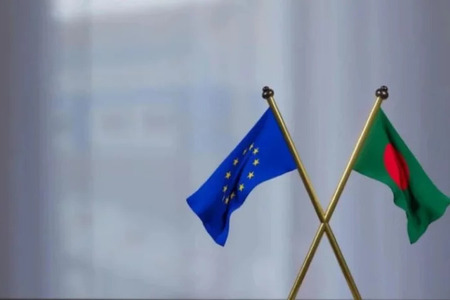
TTIP’s next round of negotiation with the U.S. to begin soon
YarnsandFibers News Bureau 2016-07-01 16:00:00 – WashingtonCecilia Malmstrom, trade commissioner of the European Commission, the executive body of the EU, in a speech at the Atlantic Council here said that the next round of negotiations of Transatlantic Trade and Investment Partnership trade deal (TTIP) with the U.S. will begin the week of July 11 in Brussels despite the turmoil surrounding the U.K.’s vote to leave the European Union.
Malmstrom said that they are committed to this trade agenda. They are negotiating with a lot of other countries as well, not only TTIP. And they will do whatever need to make as much progress as possible in the coming months, and if possible conclude it before the end of the Obama administration. That is still plan A. And that has not changed, even if the referendum is there. The Brits are still with them and are negotiating with them. That was confirmed yesterday by member states.
Also sooner or later the EU will have to make decisions about TTIP once the U.K. and its next prime minister define its trade relationship with the EU and rest of the world. But for now, negotiators will negotiate as a 28-member bloc with the U.K.
U.S. and EU negotiators have been negotiating TTIP for more than three years, seeking to forge a deal that would eliminate tariffs on imports, streamline regulations, remove burdensome technical barriers and eliminate redundancies in areas such as customs procedures, product safety testing and certification and labeling requirements.
Malmstrom said that they can now — looking at all the different proposals and issues papers — begin to see the outlines of what TTIP will actually look like.
To meet the year-end target of concluding the talks, negotiators will have to move fast and she gave an update on where things stand in different areas of the TTIP negotiations.
On market access, negotiators are looking for an ambitious outcome that removes almost all tariff protection. Here, they are relatively well-positioned, with ambitious offers on the table from both sides.
The U.S. and EU have long touted the TTIP as an agreement that can bring regulatory cohesion to a thicket of diverse regulations that often impede trade across the Atlantic.
U.S. and European fashion industry associations have pressed TTIP negotiators to streamline, simplify or eliminate duplicative and burdensome labeling and product safety requirements.
There are several sticking points in the talks, including an investor-state dispute settlement mechanism that allows an investor the right to use dispute settlement proceedings against a foreign government. Differences in government procurement policies are also thorny. Those issues could slow down the talks if they move into high gear this summer.
Malmstrom noted there was still “more work to do†on trade in services to address long-standing barriers and said negotiators are still trying to resolve differences over public procurement provisions, an area that the U.S. textile industry is keenly watching.
The National Council of Textile Organizations has said that it sees some challenges as the Obama administration accelerates negotiations with the EU on TTIP.
The two biggest issues for the industry are that the EU favors a more liberal rule of origin, a fabric-forward rule, as opposed to the stricter yarn-forward rule that the U.S. supports. In addition, the EU is pressing for access to U.S. military contracts through the government procurement process, which currently only allows the Defense Department to purchase 100 percent U.S.-made products from the fiber forward under the Berry Amendment. Several textile companies rely on the U.S. government procurement business to grow and expand, and staunchly oppose opening it up to European bidding.
Malmstrom argued the EU’s case, saying that the bloc is “looking for a level playing field.â€
When EU companies compete for contracts — with the federal government and in a critical mass of U.S. states — they should have the same advantages as U.S. firms have under their European system. As they have one set of rules, full transparency and a joint database for all levels of the European Union.
Market Intelligence
Ask for free sample Report

experience
Customer Base
dedicated team
Countries Served Worldwide




![Freitag unveils new Mono[P6] circular backpack](https://www.yarnsandfibers.com/wp-content/uploads/2024/04/Freitag.jpg)




